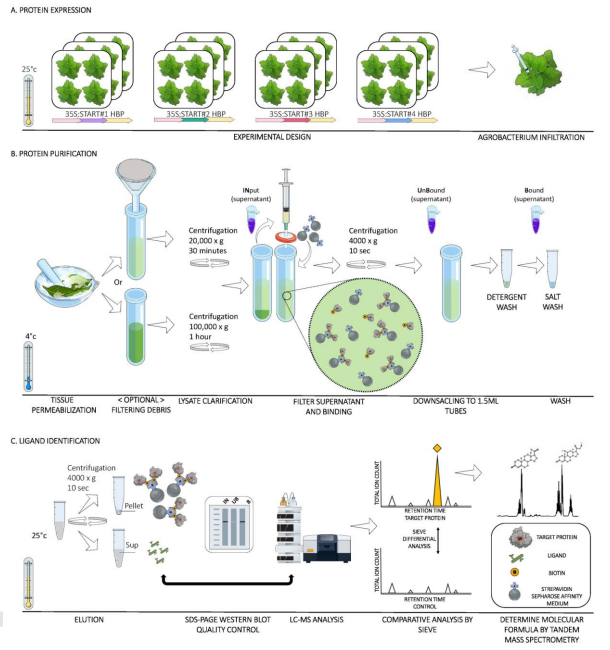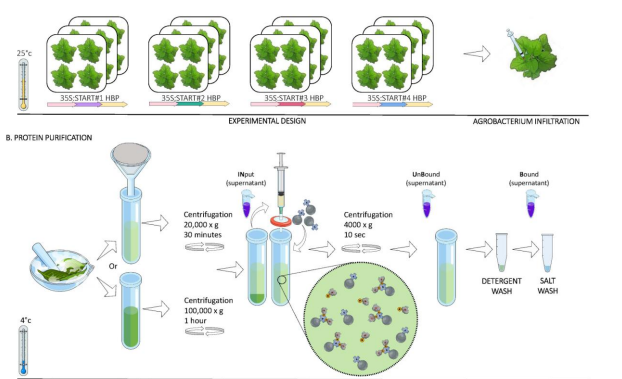A visual abstract is not easy to create, but’s here to stay. So we always love to show off our users’ amazing work as an inspiring example of visual abstract. We want to empower scientists to enable a more more visual and reachable science.
In the post, I will show you a little of the original research by Yelena Sterlin and colleagues. She is a Ph.D. student in the Faculty of Agriculture, Food and Environment at the Hebrew University of Jerusalem.
Her new paper Optimized Small‐Molecule Pull‐Downs Define MLBP1 as an Acyl‐Lipid‐Binding Protein brings light to the protein-metabolite interactions in plants, with focus on the abscisic acid (ABA) receptors. She is also a mind the graph subscriber, so she created a infographic in mind the graph to explain their methodology.
The importance of START domain-related proteins
According to Nature Magazine, abscisic acid (ABA) is the main phytohormone involved in abiotic stress response and its adaptation. Also, it is a candidate agrichemical. The ABA was first discovered in the 1960s. After that, it has since been found to be a key regulator of such diverse processes as dormancy, germination, seed development, and responses to biotic and abiotic stress.
The earliest events involving the ABA signaling pathway involves ABA binding to PYR/PYL/RCARs receptors. The receptors belong to the START-domain superfamily.
The START protein domains are a lipid-binding domain present in genomes of bacteria, protists, yeast, plants and animals. However, they are more common in plants. According to Schrick, the presence of START domains in evolutionarily distant species such as animals and plants suggests a conserved mechanism for interaction of proteins with lipids/sterols.
The paper published in The Plant Journal focuses on PYR/PYL/RCARs ABA receptors. The researchers decided to optimize a method to allow identification of START domain and START domain-related protein ligands in plants, because “the START domain protein ligands are indispensable to proper functioning of their protein both in animals and plants, and plant START domain proteins were demonstrated to be implicated in essential physiological processes”.
A visual Abstract of the methodology
To explain their methodology, the scientists created an infographic with mind the graph illustrations. It’s eye-catching and easier to understand.
The infographic below shows the experimental workflow. As you can see, they expressed and purified four START proteins. They filtrated and incubated the supernatant containing native soluble fraction using streptavidin sepharose, an affinity resin for reliable and high

The authors presented a good technique for initial probing of protein ligands in plants. They adjusted the approach to discover START ligands. However, you can adopt the method to ligands of different chemical nature by adjustment of analytical conditions.
If you want to show your research using scientific illustrations and visual abstracts, you can use Mind the Graph as well. So, are you ready to improve your communication in science?

Subscribe to our newsletter
Exclusive high quality content about effective visual
communication in science.






